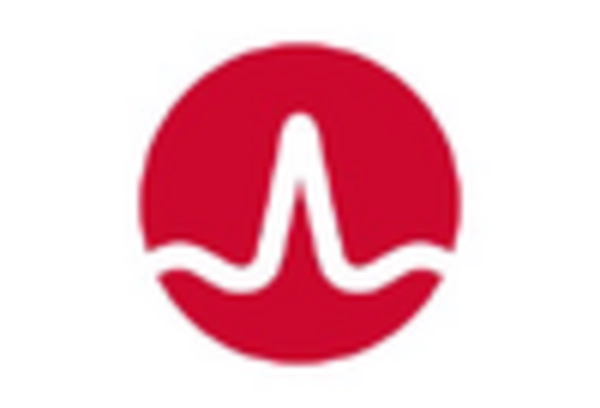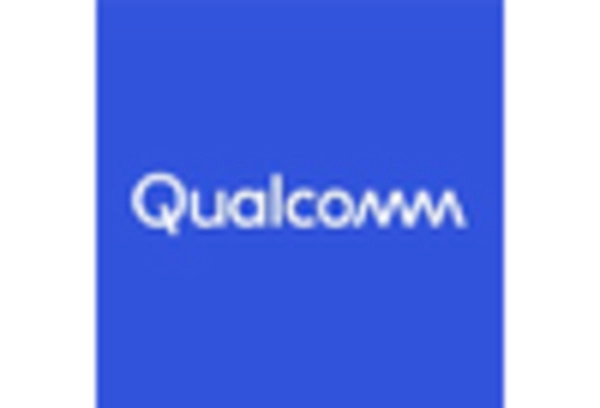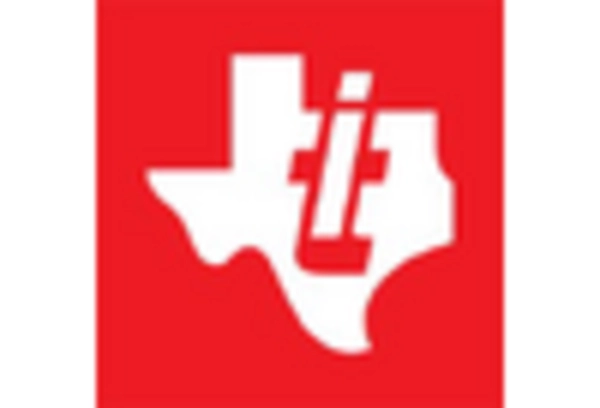Growth in Wearable Technology
The bluetooth ic market is significantly influenced by the rapid growth of wearable technology, which has gained substantial traction in the GCC region. Devices such as smartwatches, fitness trackers, and health monitoring gadgets are increasingly utilizing bluetooth technology for data synchronization and communication. The wearable technology market is expected to expand at a CAGR of approximately 20% in the coming years, indicating a robust demand for bluetooth integrated circuits. This growth is likely to be fueled by rising health consciousness among consumers and the desire for real-time data access. As manufacturers continue to innovate and enhance the functionality of wearable devices, the bluetooth ic market is poised to experience a corresponding increase in demand. The convergence of technology and health is creating new opportunities for growth within this sector.
Surge in Wireless Connectivity
The bluetooth ic market is experiencing a surge in demand driven by the increasing need for wireless connectivity across various sectors. As consumers and businesses alike seek to eliminate the constraints of wired connections, the adoption of bluetooth-enabled devices is on the rise. In the GCC region, the market for wireless audio devices, such as headphones and speakers, is projected to grow at a CAGR of approximately 15% over the next five years. This trend is indicative of a broader shift towards wireless technology, which is likely to bolster the bluetooth ic market. Furthermore, the proliferation of smart home devices, which often rely on bluetooth technology for seamless operation, is expected to further enhance market growth. The increasing consumer preference for convenience and mobility is a key driver in this evolving landscape.
Expansion of Automotive Applications
The automotive sector is increasingly integrating bluetooth technology into vehicles, thereby propelling the bluetooth ic market. With the rise of connected cars, manufacturers are incorporating bluetooth modules for hands-free communication, navigation, and entertainment systems. In the GCC, the automotive industry is witnessing a transformation, with a projected increase in the adoption of advanced driver-assistance systems (ADAS) that utilize bluetooth technology. This shift is expected to contribute to a market growth rate of around 12% annually for bluetooth ic components in automotive applications. As consumers demand more connectivity features in their vehicles, the bluetooth ic market is likely to benefit from this trend. The emphasis on safety and convenience in driving experiences is driving manufacturers to invest in bluetooth-enabled solutions, further solidifying the market's position.
Increased Focus on Smart Home Solutions
The bluetooth ic market is benefiting from the heightened focus on smart home solutions within the GCC region. As consumers increasingly seek to automate their living spaces, the demand for bluetooth-enabled devices such as smart locks, lighting systems, and home security cameras is on the rise. The smart home market is projected to grow at a CAGR of around 18% over the next few years, which is likely to drive the demand for bluetooth integrated circuits. This trend reflects a broader consumer shift towards convenience, energy efficiency, and enhanced security. Manufacturers are responding by developing innovative bluetooth solutions that cater to these needs, thereby expanding the bluetooth ic market. The integration of artificial intelligence and machine learning into smart home devices further enhances their appeal, creating additional opportunities for market growth.
Rising Adoption of Consumer Electronics
The bluetooth ic market is experiencing growth due to the rising adoption of consumer electronics in the GCC region. With an increasing number of households acquiring smart TVs, gaming consoles, and portable audio devices, the demand for bluetooth technology is becoming more pronounced. The consumer electronics market is expected to grow at a CAGR of approximately 10% in the coming years, which will likely bolster the bluetooth ic market. As manufacturers strive to enhance user experiences through seamless connectivity, the integration of bluetooth technology in these devices is becoming essential. This trend is indicative of a broader consumer preference for multifunctional devices that offer convenience and connectivity. The ongoing innovation in consumer electronics is expected to further stimulate the bluetooth ic market, as new products continue to emerge.














Leave a Comment